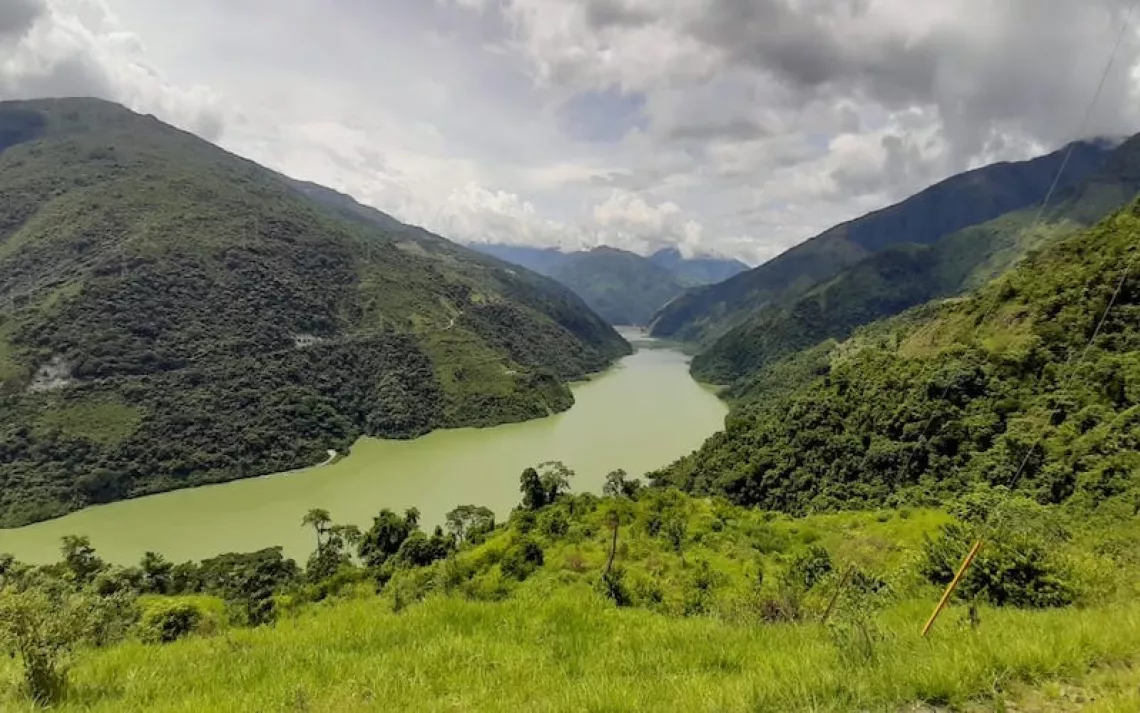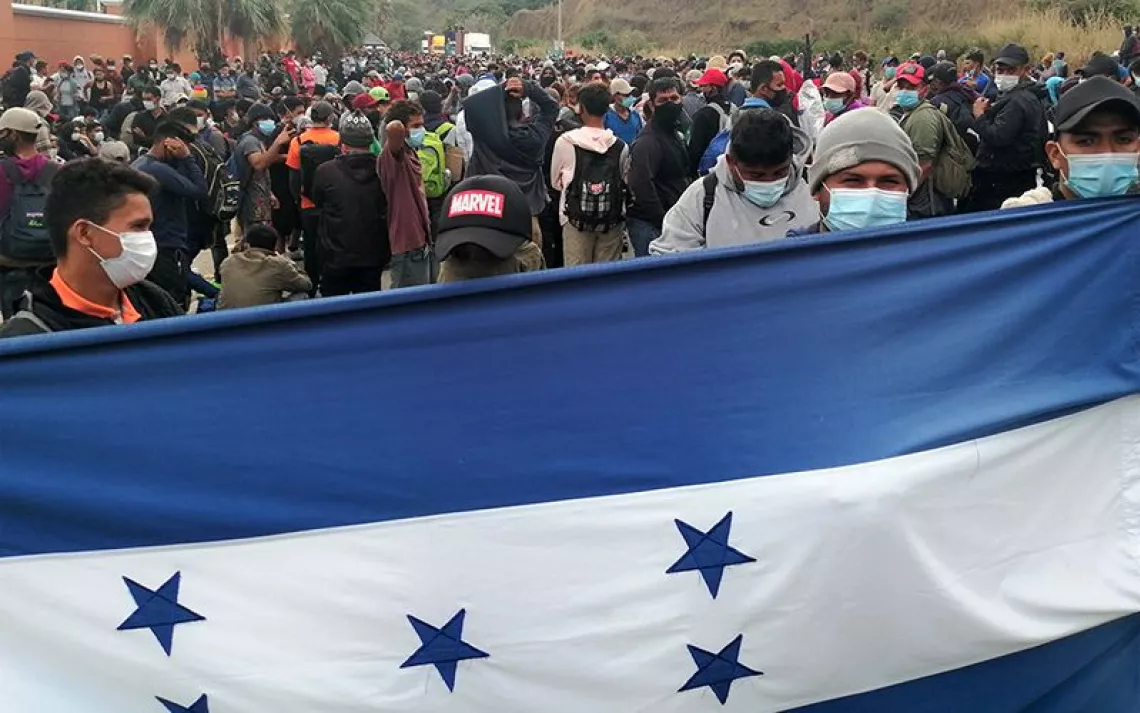Life After Wartime
Laotians live and die among 80 million unexploded munitions, many of them as dangerous as the day they dropped from the sky
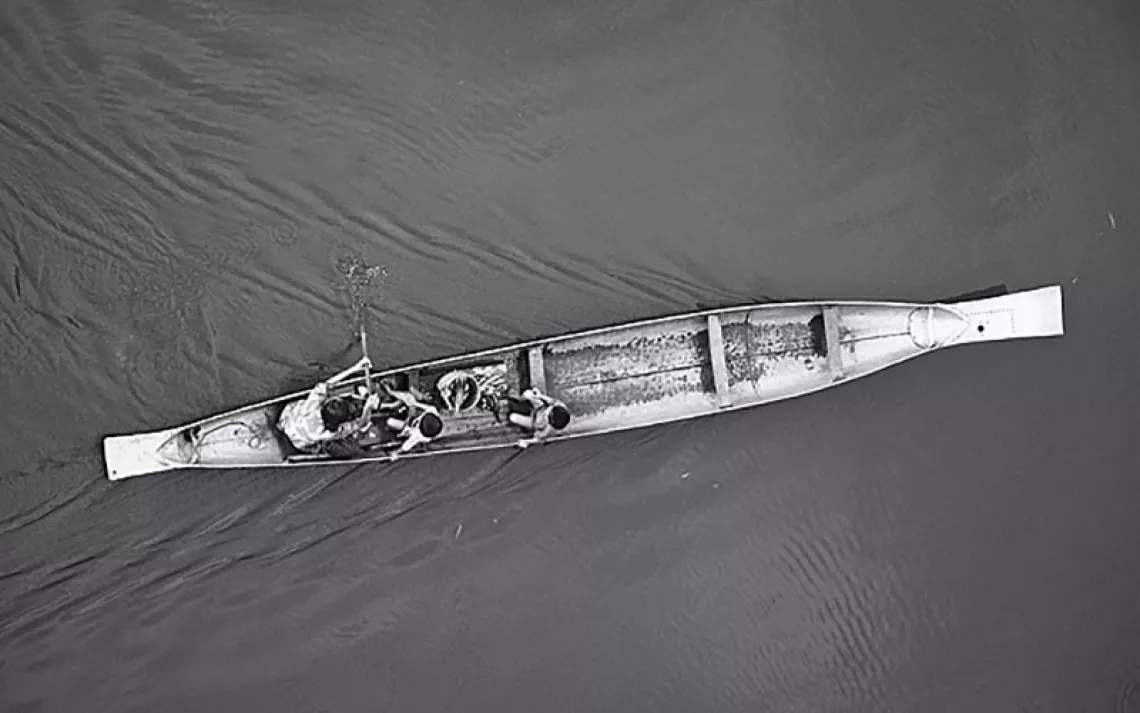
A mother paddles her children down the Sepon River in a canoe made from fuel tanks dropped by bombers during the Vietnam War. Laotians have incorporated scrap metal from U.S. bombs into their daily lives, but unexploded ordnance remains one of the country's worst environmental hazards. | Photos by Jerry Redfern
Laos is the most heavily bombed country on Earth per capita. Between 1964 and 1973, in a sideshow to the Vietnam War, the U.S. military dropped more than 2 million tons of explosives on this landlocked Southeast Asian country. It was a secret campaign, unauthorized by Congress. Laotians suffered the equivalent of one bombing raid every eight minutes for nine years. The people have never recovered, and neither has the land.
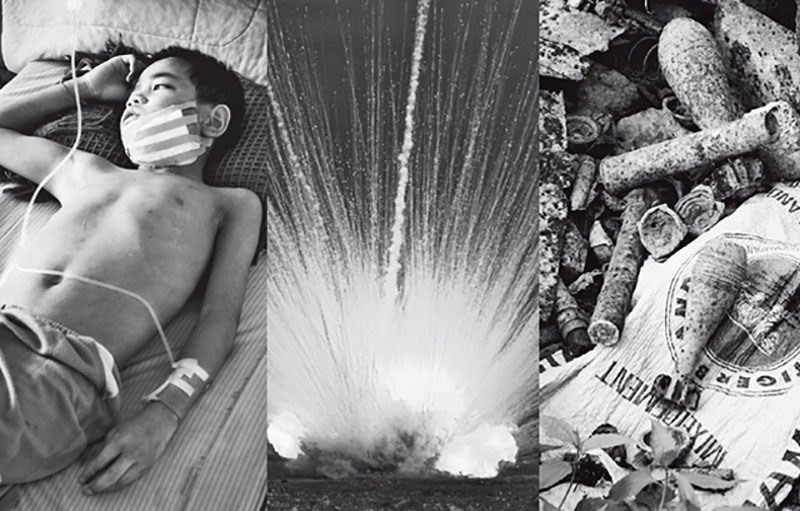
From left: Bich was farming in his family's field when a bomb exploded. He woke up in a hospital, blind in one eye and with part of his jaw missing and wounds on his legs and groin. | Seen from a mile away, a pair of phosphorus bombs are detonated by a team from New Zealand-based Phoenix Clearance Limited. | A pile of bomb scrap, shrapnel, and cluster bombs sits next to a new home along the old Ho Chi Minh Trail.
Up to 30 percent of the bombs that were dropped did not detonate on impact, and they remain volatile in the soil today. More than 50,000 people have been killed or maimed since the bombings began, with more than 20,000 of the casualties resulting from accidents after the war ended, according to a recent survey by Laos's National Regulatory Authority for Unexploded Ordnance.
While munitions fell in hundreds of shapes, sizes, and varieties, perhaps most pernicious were the "bombies." More than 270 million of these cluster submunitions were crammed into casings that opened in midair, scattering weapons across the land. They look like toys—yellow, green, brown, round like softballs or shaped like pineapples. Kids find them in the fields; villagers find them in the forests.
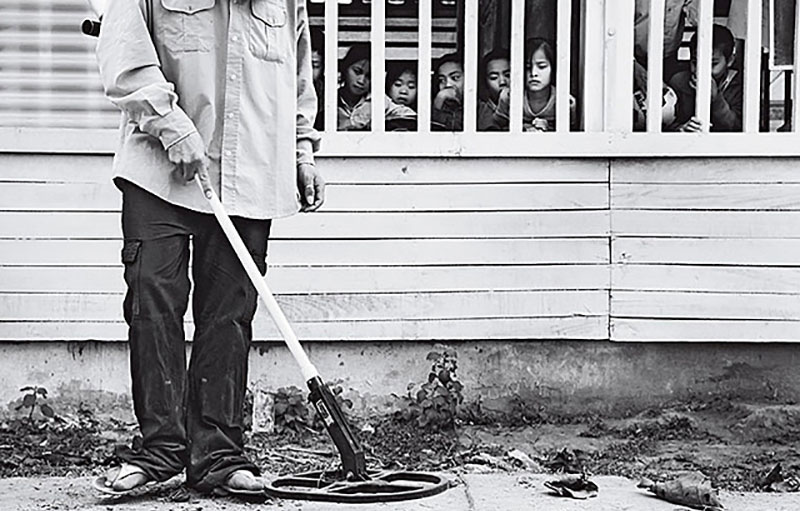
Children watch as a technician searches for unexploded ordnance in the Sopphoun Village school yard. The clearance team didn't find any munitions but did discover several pounds of bomb scrap. Locals have found cluster bombs in forested areas beyond the school fence.
Today, unexploded ordnance contaminates nearly half of all arable land in Laos, according to the World Bank's LaoPeople's Democratic Republic Environment Monitor. Yet thecountry's subsistence farmers need that land to survive: Nearly 70 percent of the population lives in the countryside, growing, foraging, fishing, and hunting. Almost every day, a Laotian is killed or maimed by unexploded ordnance. A thriving scrap-metal trade exacerbates the problem, since villagers dig for bombs. Metal sells for roughly 10 cents a pound; villagers can earn more from selling a big hunk of steel than they can from most other available work.
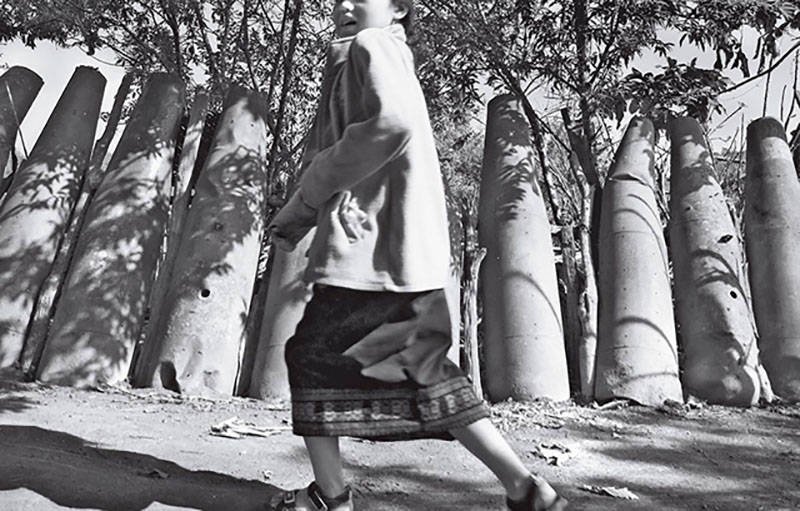
A girl runs past a fence made of cluster-bomb casings. The high-quality metal is valuable on the local scrap market; a fence like this is a good savings account.
Across much of Laos, clearance teams set out each morning to scour the soil, inch by inch. Every signal from the metal detectors is investigated; a lot of bottle caps, wire, and nails are uncovered and retrieved. Everything found requires careful consideration: Can it be safely moved, or should it be detonated in place? Sometimes, an entire village is evacuated—cows, dogs, goats, and all.
It could take centuries, and $16 billion, to clear Laos. The U.S. government donates about $3 million a year for bomb clearance here, though it spent more than $2 million a day ($17 million in today's dollars) on the bombings themselves.

Ta lost his eye and both of his arms in 2001 when a cluster bomb exploded after he prodded it with a stick. He has undergone several operations to repair the damage and now relies on the help of his seven children.
The effort is painstaking, as I discover when two boys lead a clearance team to a pair of rusty canisters the size of soda cans at the edge of a dry rice field. They're white phosphorus bombs. The team shoos buffalo, hollering through bullhorns, in preparation for detonation. The team leader places TNT beneath the ordnance. Most detonations aim for the ground, so fragments don't rain down on homes. But white phosphorus ignites on contact with air, so the plan is to shoot it straight toward the sky and burn every last bit of the substance.
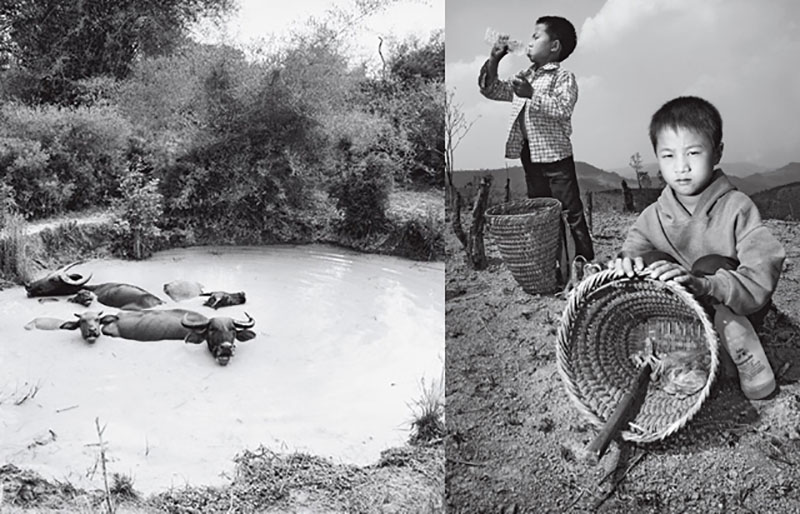
From left: Water buffalo wallow in a mud hole formed from a decades-old bomb crater along the former Ho Chi Minh Trail. | Two boys take a break from scavenging bomb scraps in the ashes of a burned field. The boys can earn the equivalent of a few dollars a day collecting the metal nuggets, more if they find an intact bomb.
We huddle under cover several hundred meters away in a "safety zone." At the count of three, I press the button to a thunderous plume of smoke and flame. Two bombs gone, and Laos is a little safer.
 The Magazine of The Sierra Club
The Magazine of The Sierra Club

